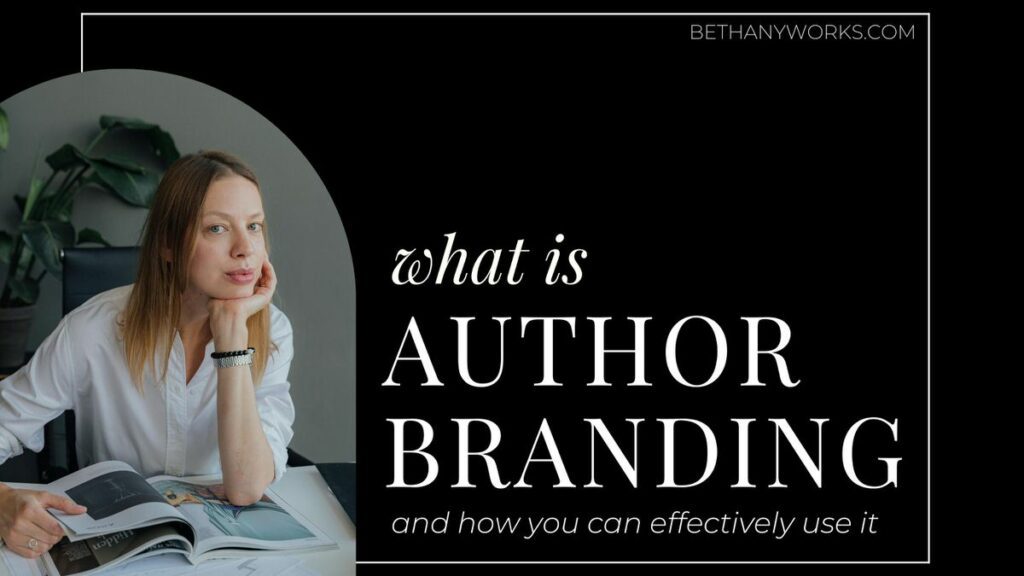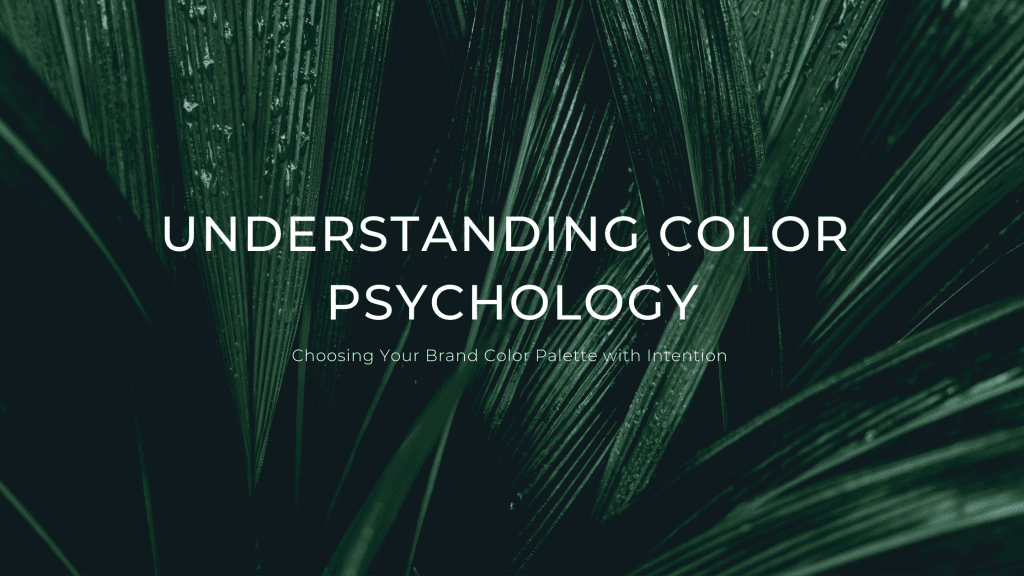As an author, you pass on your knowledge and creativity through your books, but you connect with your audience through your brand. That is why it is so crucial to have strategic author branding that gives you the roadmap to do just that.
As a brand designer myself, I work with clients day in and day out to create brands that not only represent what they stand for but also create a space for people to understand what you do and why you do it.
So, if this sounds like this is something you are struggling with, let’s take a deeper look into author branding, why it matters, and how to use it.
Why a Brand Matters for Authors

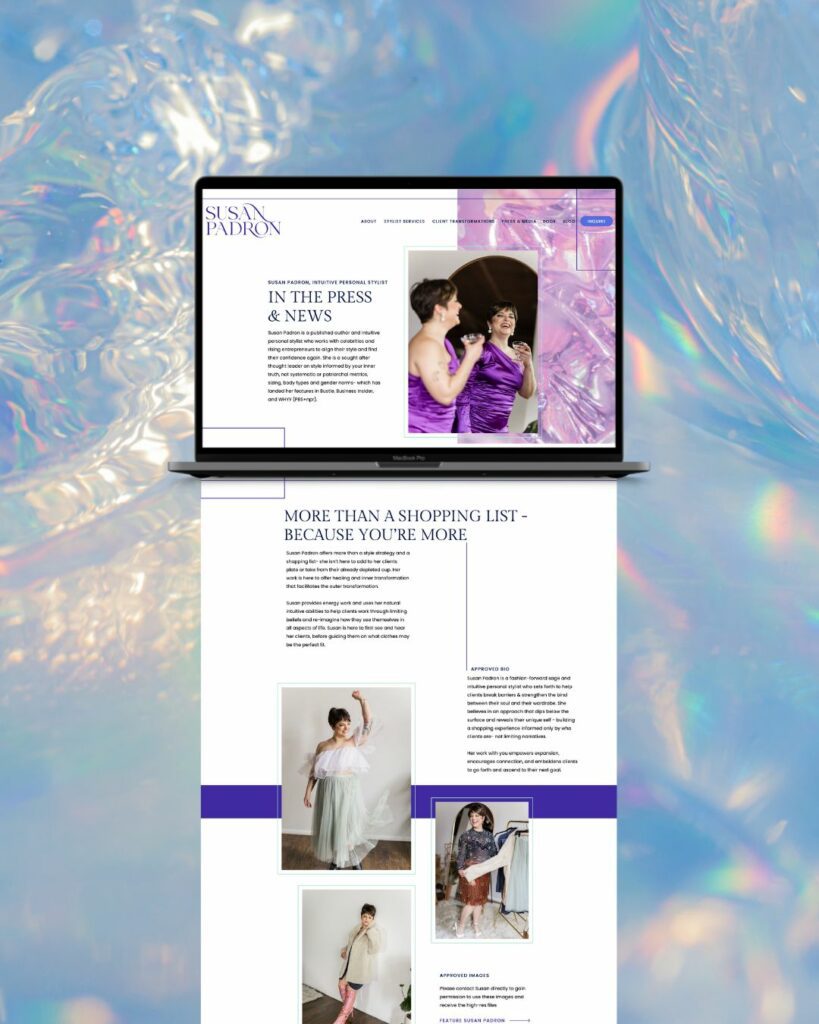
When you are looking at branding, you may be thinking “Why do I even need a brand? Isn’t it my words that are important?” While the content you put out is important as an author, there is so much more to building an audience than your books.
Your brand is how you are represented. Your brand is how you speak, what you say, how people perceive you, and even what people associate you with. As an author, this is almost always tied directly to you and your own personal brand. As a note, you get to decide how much or how little to share, and more importantly how you want to position your author brand in the market (to protect yourself and your privacy as well).
Now, why author branding actually matters breaks down to being consistent and representing yourself how you want to be represented. One of the biggest mistakes you can make is not having a cohesive brand to do this.
Every touchpoint that someone has with you should feel like it is related Whether they are looking at your website, your social media, your marketing, or picking up your book, they should all feel connected and familiar.
Unearth your brand personality to stand out. Take the FREE Brand Archetype Quiz!

Key Pillars to Effective Author Branding
Brand Messaging
When we talk about brand messaging, we are thinking about what you are saying, how you are saying it, and who you are actually saying it to. All of these factors (and even more) play into how people perceive your brand when they consume your content (beyond the book!).
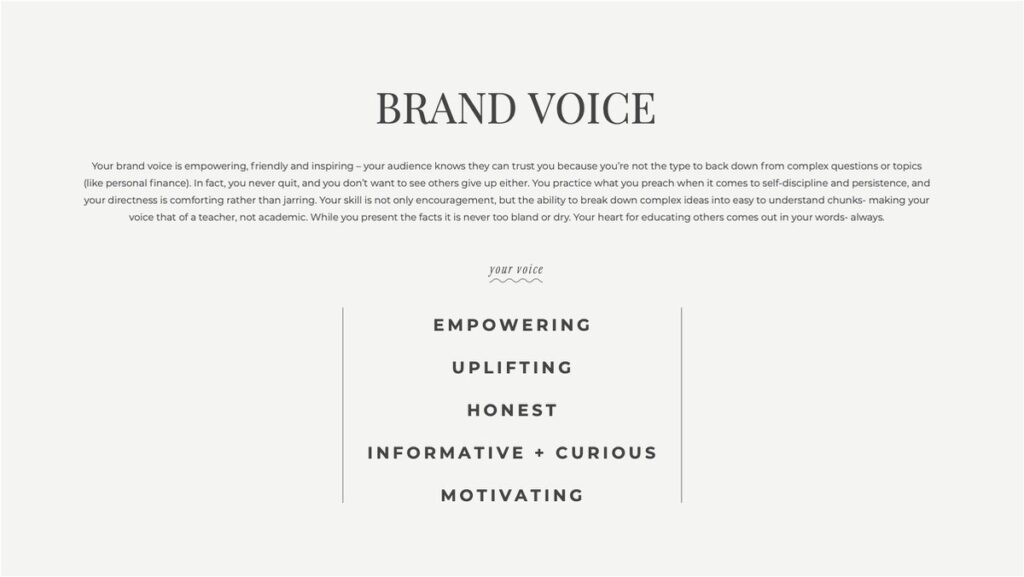
Let’s break each of these down a bit. First, let’s talk about what you are actually saying. This is the content that you are writing out or talking about. What you say says so much about your brand and your values.
For example, with my client Susan Padron, the words that she puts out there are very supportive, encouraging, and invite vulnerability through intuition. This directly supports her goal as a brand to support people as they embark on a transformative style journey with her.
It’s not just what you are saying, but also how you are saying it (ie your tone of voice). Do you have a very casual tone or are you more serious? Do you like to be funny and throw in jokes every once in a while or are you much more straightforward and literal with how you speak?
With my client Matt Schulz, his brand is rooted in a more serious topic of finance, but he has a very approachable and casual way he talks about it that makes his brand feel more relatable. It also makes him an easy choice for all of the news outlets that regularly bring him on to talk about finance, he truly is the guy next door (human archetype), which makes him relatable for most people.
Speaking of being relatable, who you are talking to is also vital in your brand messaging. You can’t speak to everyone. If you are speaking to everyone, you are not speaking to anyone. So, be sure to get clear on who your target audience is for your work and how you can talk directly to them.
With my client, Paulette Perhach, she is a writer herself who coaches other writers. Because of this, most of the content she puts out is speaking directly to writers themselves who are trying to get better at their craft. She does this by sharing her own rejected pitches for her personal work and is even building a software to support writing getting major bylines.This is her target with her brand (and aligns with her regular writing work with The New York Times).
The goal is that you can reach a specific audience that is a good fit to work with you or engage with your work. Ask yourself who is going to benefit from your knowledge.
Finally, your brand messaging can also touch on your unique positioning (i.e. what you do that is different from everyone else) as well as your expertise. This is going to be especially important if you are an author that focuses mainly on non-fiction work.
Throughout your brand messaging you want to make sure that you are telling people why they should trust you. This can be through talking about your past experiences, showing off work that you have done or collaborations you have done with other businesses, and through social proof (ie reviews or testimonials from other trusted people).
Brand Visuals



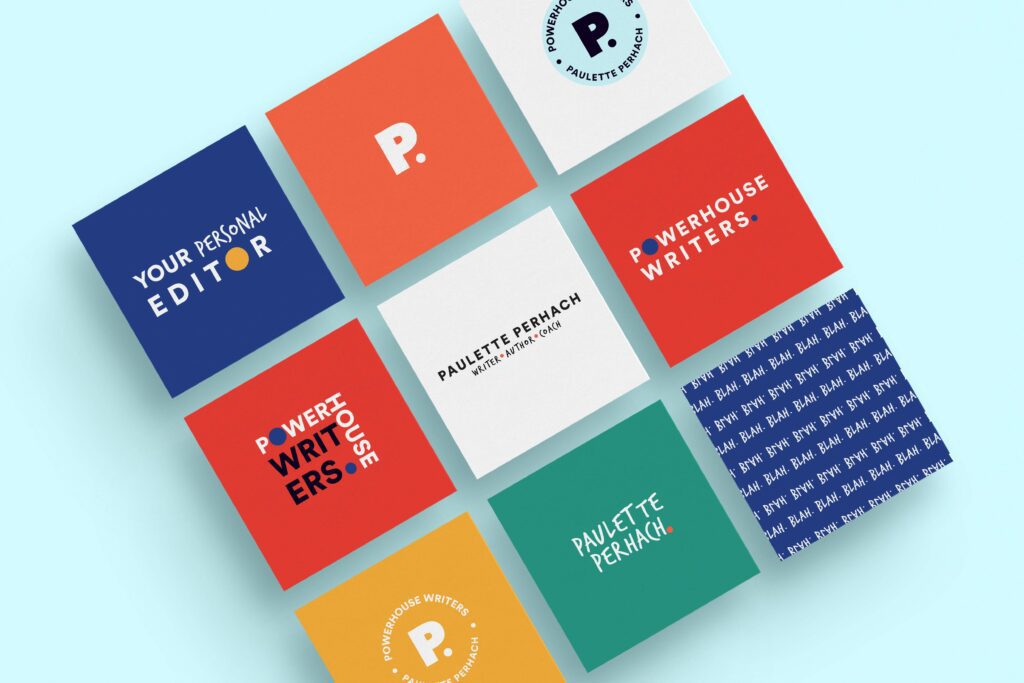
Another major part of any author branding is going to be your brand visuals. This is most likely what you think about when you think about branding and there is a good reason why (it’s the sexy part, let’s be real).
Your brand visuals play a major role in how people perceive your brand, even before they have read a single word that you have written. You know already people do judge a book by its cover, and the same applies for your branding. These visuals include assets such as logos, submarks, and icons as well as your font suite and color palette.
All of these should work together with your brand messaging to create a cohesive feel throughout your brand. Let’s take a look at what I actually mean by that.
Say you’re a finance writer whose audience is people making six figures and looking to increase their income even more. If you were to have a visual brand that was made up of neon colors and a font suite that included a bold sans serif, people may have a really hard time trusting you. It gives a little too ‘tech start-up’ than high-end finance expert who can help you level up.
Even if all of the information that you have written in your book(s) is valuable and useful, your brand itself doesn’t scream “trustworthy” if it’s unaligned. Your audience may look at it and question your expertise and/or if they should actually listen to the information you are giving them.
Instead, your brand visuals should be on the same level as your brand messaging so that each part flows and connects seamlessly to create an entire experience that instills trust and confidence in potential customers.

RESULTS THAT SPEAK FOR THEMSELVES
Download our case studies + client experiences to review the impact of our website design and brand strategy services have beyond the stunning deliverables you’ll find in our portfolio.
If we are looking at that same finance writer, it may mean having a color palette that leans more into greens,golds and blues. These are colors that are generally associated with wealth and trust and would make more sense in this case.
When it comes to fonts, we would maybe go with a more modern serif font that elevated the brand and made it feel more luxurious because that is the lifestyle that potential readers are going to be looking for.
On the flip side, if you have already created work and published books before getting a professional brand done (which I would not suggest doing if you can avoid it), you can take what you have created and expand on it.
This is what I did with my client Paulette (pictured above) to give her a more extensive brand with more options. She had already published a book so we used that as a base inspiration and created a color palette and font suite that matched that book cover, but also expanded on it because she needed versatility.

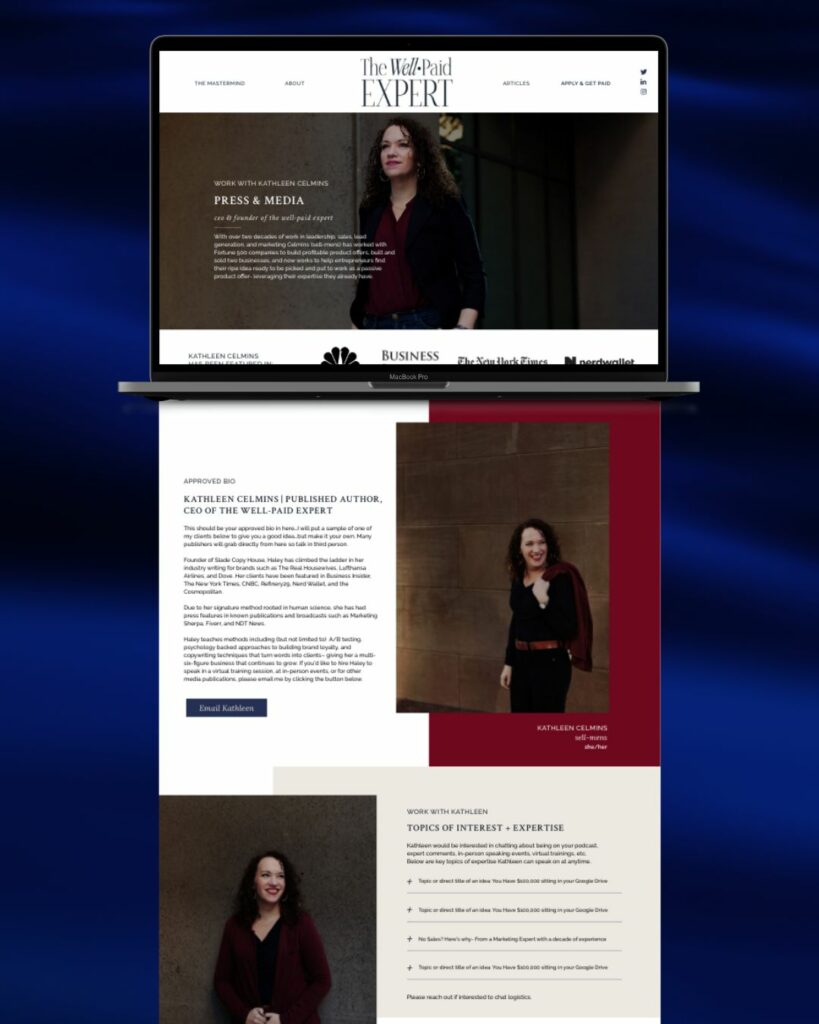
How to Use Your Author Brand Effectively
Getting author branding is just the first step in the process. Once you have the branding, you also have to make sure that you’re using it effectively. Generally, you will find that there are 3 main areas that you will consistently be using your brand:
- Your website
- Your social media
- In print materials
Your website and your social media is where you are really going to see the combination of your brand messaging and brand visuals. Your site should speak to your ideal customer and address whatever their issue is that you can help solve with your work.
For example, they may be worried about financial insecurity and your book can help them get their finances in line. Or they may be working to become a writer of their own but aren’t sure where to start. Your book can help give them the roadmap to publishing their first piece of work.
Whatever your brand messaging, you want to make sure that it is very clear and cohesive throughout your site. Then, your brand visuals come into play. These should elevate your presence and continue to create a connected feeling throughout your brand.


If your brand voice is very casual , fun and irreverent, you can maybe even add some elements throughout your site like brand marks, patterned backgrounds, or even GIFs. This will not only add interest to your site, but also helps people understand your brand better.
When it comes to your social media, the biggest mistake that most people will make is having a social feed that feels totally disconnected from the rest of their brand presence. If someone comes across you on Instagram, they should not question if they clicked to the right site when they land on your website. It should also add to your authority and credibility, not distract from it.
While social media can give you a space where you can be a bit more relaxed and open than you would in other places, you want to make sure that you are using all of the same brand visuals that you use on your website.
This will help grow your brand awareness and make people feel as if they already know and trust you before they even pick up your book.
Finally, you want to make sure any print materials you get are also on-brand. This includes any future books that you publish as well. Now, this doesn’t mean that everything has to look exactly the same.
But, using the same colors, fonts, or design style on your covers, for example, can help create a visual pattern that people will pick up on. This means when they see your book on the shelf, it may catch their eye before they even read who wrote it because it feels familiar to them.
Final Thoughts on Branding for Authors

Hopefully these tips on what your author branding should include and how you can use it, will help you expand your reach and connect with your audience on a deeper level. At the end of the day, an effective brand can really bring your writing career to the next level.
If you are ready to invest in yourself and in your writing with a strategic brand built with your ideal customer in mind, let’s chat! You can click here to learn more about my brand and web design services or head over here to get in touch.
Check out these posts next:

